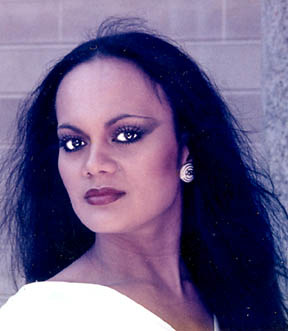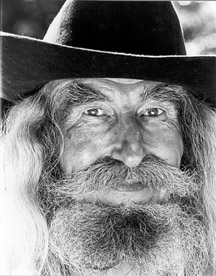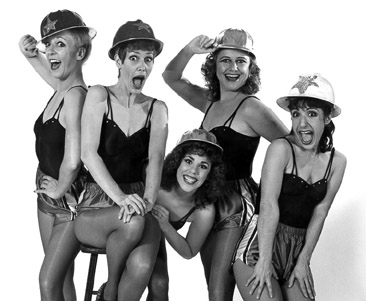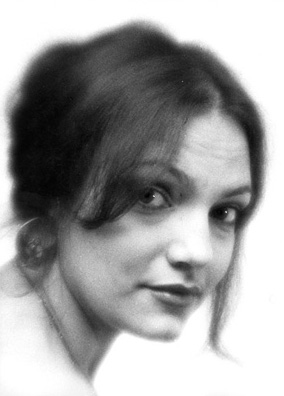Beautiful People
My assignment to come to San
Francisco was a very good one. In 1978, I
got a two bedroom apartment downtown within walking distance of
Fisherman’s
Wharf and the TransAmerica Pyramid where I worked. In my second bedroom, I
built and furnished a darkroom for my photography hobby. I set up a
photo
studio with seamless paper in the living room. I was set to photograph
the
beautiful people of San Francisco.
 One day
I stepped into the
elevator with a camera around my neck and there were two beautiful
women who
asked if I did portfolios. I made appointments for the next day and
then asked
the landlady who they were.
One day
I stepped into the
elevator with a camera around my neck and there were two beautiful
women who
asked if I did portfolios. I made appointments for the next day and
then asked
the landlady who they were.
“Oh, those guys work at
Finochio’s. They’re female impersonators.”
“Uh, thanks for the tip.”
When they showed up for the
shoot,
I was cool and didn’t freak out. They were very good models. The
headliner
never blinked as long as I had a camera in my hand. I had never shot
360
consecutive pictures without a blink. We also went out to the Legion of
Honor
and the Palace of Fine Arts in wedding gowns. They were exhibitionists
and
never failed to draw a crowd wherever we went.
 I would
stop people on the
streets
and take their pictures or bring them into the studio and began to
develop
quite an interesting portfolio. I worked with street musicians and
comedians
from the many comedy clubs in the city. They were not all beautiful
people, one
in particular was a 74-year-old man who called himself Saint
Francis. I first met him
at an open air art show. It was a nice day and he was in a green tank
top with
a cowboy hat, shoulder length hair and four inch beard. He
would stop women and talk to them briefly and the women would get down
on the
ground with their knees together and their ankles splayed out to the
side and
continue to talk to him. This was strange. I just had to find out what
he was
up to. I ask one of the women what they were doing. “Saint Francis said
that we
were animals before we were people and some of us were frogs. The way
you could
tell who was a frog was to get in that position. If it felt okay
then you had been a frog.”
I would
stop people on the
streets
and take their pictures or bring them into the studio and began to
develop
quite an interesting portfolio. I worked with street musicians and
comedians
from the many comedy clubs in the city. They were not all beautiful
people, one
in particular was a 74-year-old man who called himself Saint
Francis. I first met him
at an open air art show. It was a nice day and he was in a green tank
top with
a cowboy hat, shoulder length hair and four inch beard. He
would stop women and talk to them briefly and the women would get down
on the
ground with their knees together and their ankles splayed out to the
side and
continue to talk to him. This was strange. I just had to find out what
he was
up to. I ask one of the women what they were doing. “Saint Francis said
that we
were animals before we were people and some of us were frogs. The way
you could
tell who was a frog was to get in that position. If it felt okay
then you had been a frog.”
I asked if I could do a
special
shoot of him and made an appointment. When I got to his place, the
basement of
a house in the Ocean
Beach area of San Francisco,
I
saw that he was a REAL character. Other photographers over a period of
many
years had made large prints of him in a great variety of costumes,
turbans,
hats, uniforms, and all. He
had been a rivet bucker on the Bay Bridge and
the Golden Gate Bridge in 1935. He was the person who held a cupped
anvil
against the red hot rivet while someone else whacked it with a
pneumatic
hammer. He lost most of his hearing at that time, that’s why he talks so
much. He doesn’t do well when he has to listen, so he controls the
conversation
so he knows what’s going on. I got some great pictures and we had a
nice picnic
in the west end of Golden Gate Park.
 Another character I got to
know
was Rosie Radiator, whose
dance group was called the Pushrods. Rosie taught
just about everybody in the Castro to tap dance. She would take a group
of
fifty people and tap dance/march across the Golden Gate Bridge or down
Market
Street. She would tap dance in front of a building under construction
and the
iron workers would spray paint ‘Rosie Radiator’ on
the steel girders. She claimed her mother was the original ‘Rosie the
Riveter’.
She had a big studio in the loft of an old warehouse in South San
Francisco. I
was almost tempted to take a loft in the building and join the commune.
Another character I got to
know
was Rosie Radiator, whose
dance group was called the Pushrods. Rosie taught
just about everybody in the Castro to tap dance. She would take a group
of
fifty people and tap dance/march across the Golden Gate Bridge or down
Market
Street. She would tap dance in front of a building under construction
and the
iron workers would spray paint ‘Rosie Radiator’ on
the steel girders. She claimed her mother was the original ‘Rosie the
Riveter’.
She had a big studio in the loft of an old warehouse in South San
Francisco. I
was almost tempted to take a loft in the building and join the commune.
There was a gal comedian
living in
that building who sometimes dressed in a nun’s habit and played the
trumpet. I
met her and Carrie Snow at the Holy City Zoo and the two of them
provided some
great comedy shots for my portfolio.
There was a refrigerator, in
an open area of the building where Rosie lived, stocked with booze
and in the freezer were rolled joints. Anyone could take what they
wanted and
leave money in a can. The refrigerator was run by a guy known as the ‘Human Jukebox’. He had a
little square tent painted
like a jukebox and had a Punch and Judy type curtain in the front where he
would pop out and play a really funny but bad version of a song
requested on a
badly banged up bugle. There was a hole to put the money in. He always
had
customers and he worked at the end of the cable car line kitty-corner
from the Buena Vista Bar. He had a lot of problems with the law. It
seems if
someone put a $20 bill in the slot and didn’t request a song they got a
baggie
of grass. A $5 bill got a rolled joint. His excuse was that people
needed a
place to get their stuff and he was just doing a public service. He got
busted
a lot and got bailed out by the locals. The tourists just enjoyed the
music and
fun.
 One of
the comedians, Patricia,
was
a comedy writer and put out a monthly publication of topical jokes some
of
which made their way into late night talk shows. Sometimes she would
get a call
from Johnny Carson to write a special and got paid to keep it exclusive
so
other comics would not be using it. I became good friends with Patricia
and she
took me home to meet her relatives at Mardi Gras time in New Orleans.
Seeing
Mardi Gras with a native and being involved with the non-tourist
activities of New Orleans is a real treat, something you just can’t
buy.
One of
the comedians, Patricia,
was
a comedy writer and put out a monthly publication of topical jokes some
of
which made their way into late night talk shows. Sometimes she would
get a call
from Johnny Carson to write a special and got paid to keep it exclusive
so
other comics would not be using it. I became good friends with Patricia
and she
took me home to meet her relatives at Mardi Gras time in New Orleans.
Seeing
Mardi Gras with a native and being involved with the non-tourist
activities of New Orleans is a real treat, something you just can’t
buy.
Pat would tip me off when
Robin
Williams or Dana Carvey planned to test a new act at the Holy City Zoo.
Her ex-husband,
whom she was still friendly with, was the manager there. I would have
spent more time with Pat but,
being an entertainer, she
stayed up late at night and I had work to do in the daytime.
Penn and Teller, the
bad boy magicians, spent
their pre-fame days doing a
sidewalk show in the
lobby of the Hippodrome Theatre on Broadway near Columbus. There were
three in
the group at that time. There was a tall thin man who played the violin
who was funny but I can’t remember a thing he said. After he left the
group,
Penn and Teller did some nightclub acts at Bimbo’s on Columbus,
half a block from my apartment. Bimbo’s burned a couple of times while
I lived
there. Seems like that was the only thing that made money for the
property.
Penn and Teller are big in Las Vegas now and have their own TV
production
company.
I
met a dancer who held the
choreography rights from the Isadora Duncan Dance Foundation and I was
her
masseur and photographer for a short while. Her dance studio provided
some very
interesting subjects to photograph. Like the original Isadora she was
difficult
to capture and hold. Her world and mine were not compatible.


